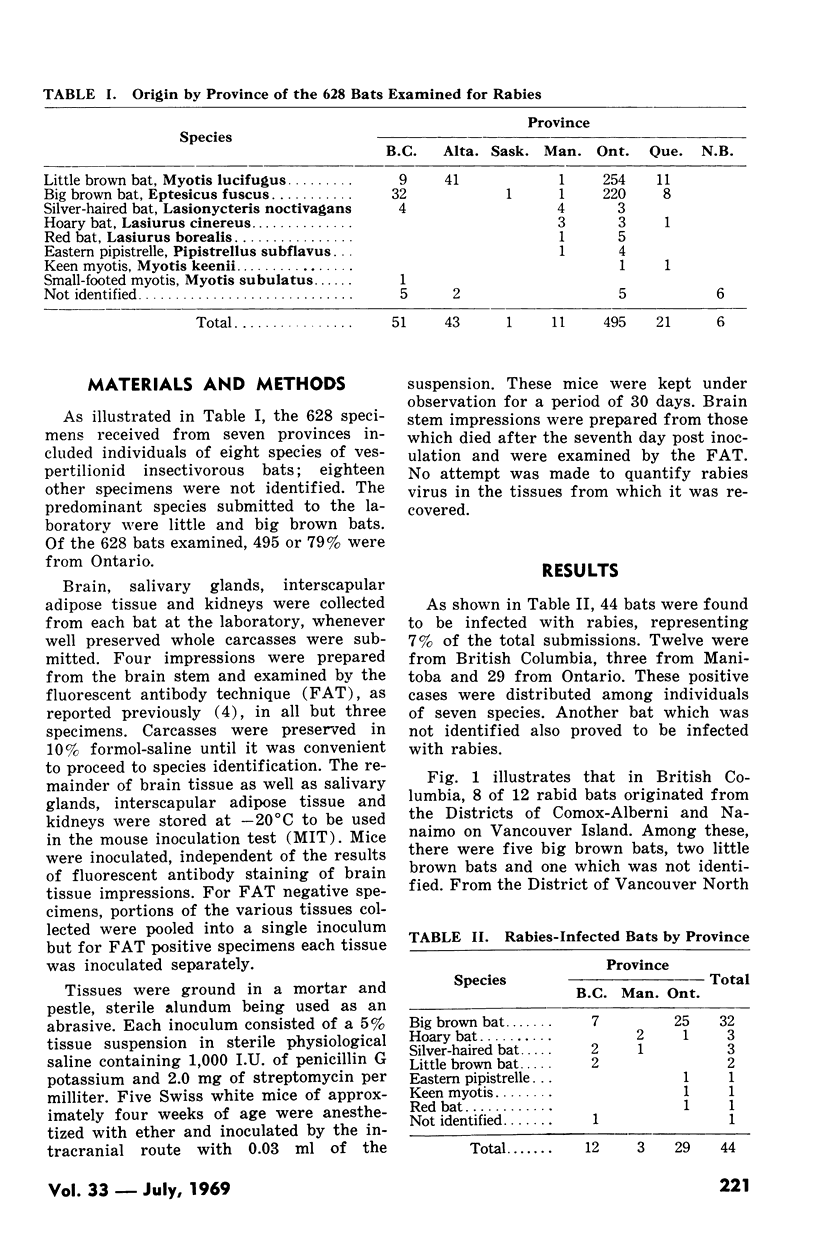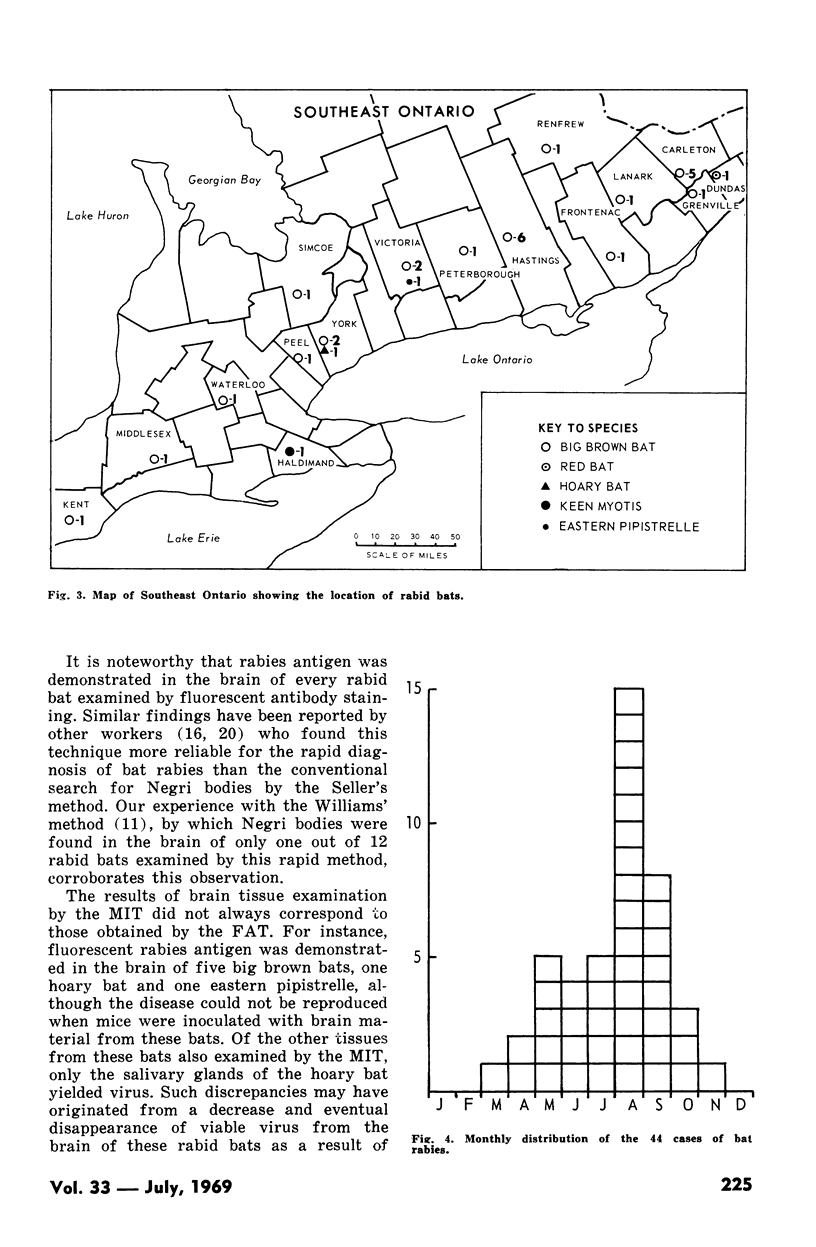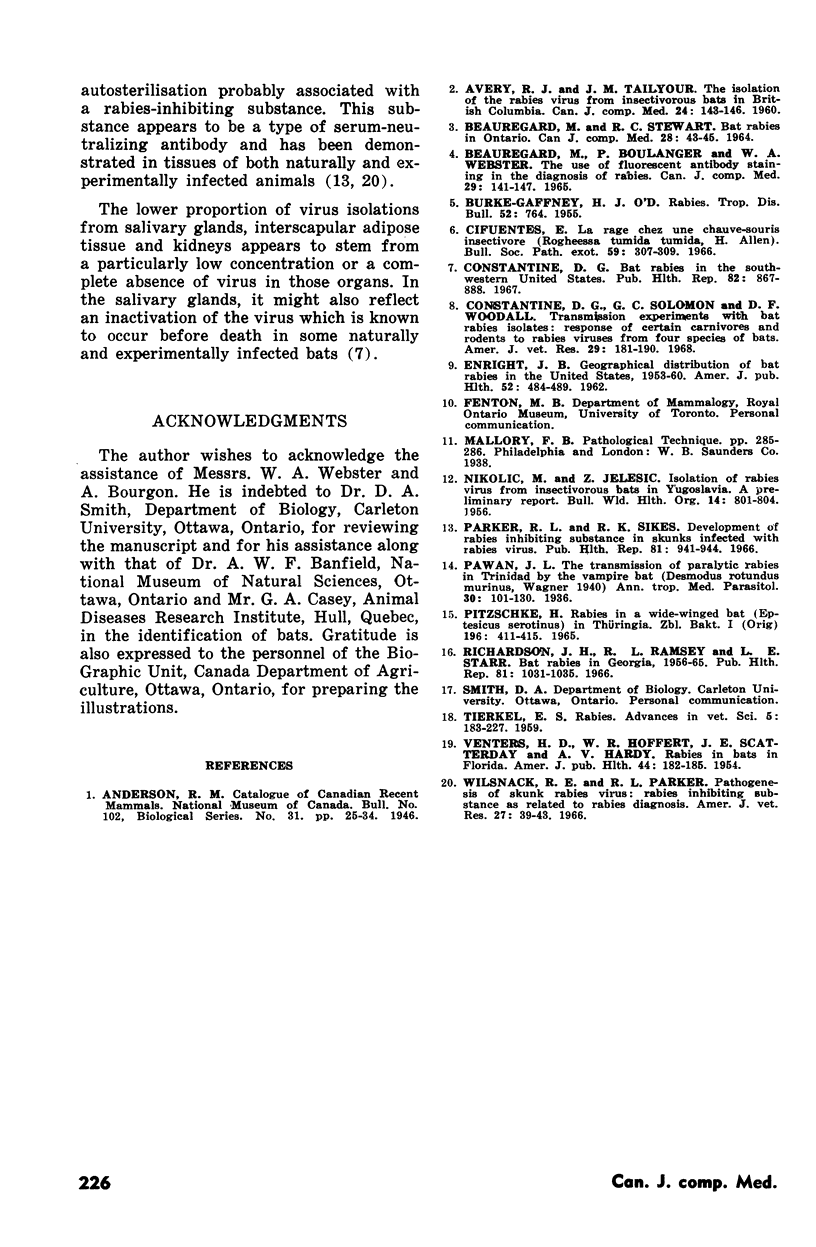Abstract
Six hundred and twenty-eight insectivorous bats originating from seven provinces were submitted to this Institute for rabies diagnosis between August 1, 1963 and December 31, 1967. Brain tissue was examined by the fluorescent antibody technique and the mouse infectivity test was carried out with brain, salivary gland, interscapular adipose tissue and kidney samples. Rabies virus was detected in 44 bats, 29 of which were from Ontario, 12 from British Columbia and three from Manitoba. Most of the positive cases were diagnosed in summer months. Seven species were represented among the specimens found to be rabid; there were 32 big brown bats, three hoary bats, three silver-haired bats, two little brown bats, one eastern pipistrelle, one Keen myotis and one red bat. Another bat which was not identified also proved to be infected with rabies.
Full text
PDF






Selected References
These references are in PubMed. This may not be the complete list of references from this article.
- Avery R. J., Tailyour J. M. The Isolation of the Rabies Virus from Insectivorous Bats in British Columbia. Can J Comp Med Vet Sci. 1960 May;24(5):143–146. [PMC free article] [PubMed] [Google Scholar]
- BEAUREGARD M., BOULANGER P., WEBSTER W. A. THE USE OF FLUORESCENT ANTIBODY STAINING IN THE DIAGNOSIS OF RABIES. Can J Comp Med Vet Sci. 1965 Jun;29:141–147. [PMC free article] [PubMed] [Google Scholar]
- Beauregard M., Stewart R. C. Bat Rabies in Ontario. Can J Comp Med Vet Sci. 1964 Feb;28(2):43–45. [PMC free article] [PubMed] [Google Scholar]
- Cifuentes E. La rage chez une chauve-souris insectivore (Rogheessa tumida tumida H-Allen) Bull Soc Pathol Exot Filiales. 1966 May-Jun;59(3):307–309. [PubMed] [Google Scholar]
- Constantine D. G. Bat rabies in the southwestern United States. Public Health Rep. 1967 Oct;82(10):867–888. [PMC free article] [PubMed] [Google Scholar]
- Constantine D. G., Solomon G. C., Woodall D. F. Transmission experiments with bat rabies isolates: responses of certain carnivores and rodents to rabies viruses from four species of bats. Am J Vet Res. 1968 Jan;29(1):181–190. [PubMed] [Google Scholar]
- JELESIC Z., NIKOLIC M. Isolation of rabies virus from insectivorous bats in Yugoslavia. Bull World Health Organ. 1956;14(4):801–804. [PMC free article] [PubMed] [Google Scholar]
- Parker R. L., Sikes R. K. Development of rabies inhibiting substance in skunks infected with rabies virus. Public Health Rep. 1966 Oct;81(10):941–944. [PMC free article] [PubMed] [Google Scholar]
- Pitzschke H. Tollwut bei einer Breitflügel-Fledermaus (Eptesicus serotinus) in Thüringen. Zentralbl Bakteriol Orig. 1965 Jul;196(4):411–415. [PubMed] [Google Scholar]
- Richardson J. H., Ramsey R. L., Starr L. E. Bat rabies in Georgia, 1956-65. Public Health Rep. 1966 Nov;81(11):1031–1035. [PMC free article] [PubMed] [Google Scholar]
- VENTERS H. D., HOFFERT W. R., SCHATTERDAY J. E., HARDY A. V. Rabies in bats in Florida. Am J Public Health Nations Health. 1954 Feb;44(2):182–185. doi: 10.2105/ajph.44.2.182. [DOI] [PMC free article] [PubMed] [Google Scholar]
- Wilsnack R. E., Parker R. L. Pathogenesis of skunk rabies virus: rabies inhibiting substance as related to rabies diagnosis. Am J Vet Res. 1966 Jan;27(116):39–43. [PubMed] [Google Scholar]


